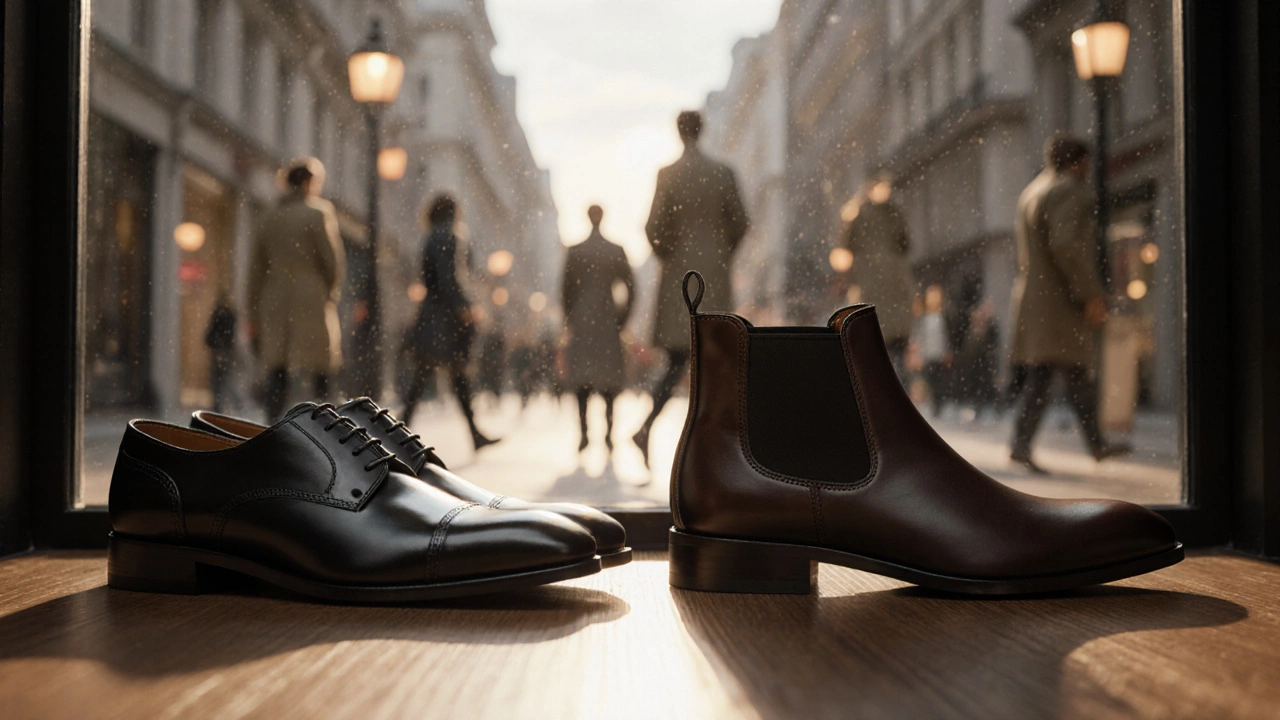Shoe Terminology: The Essential Guide for Every Footwear Fan
When talking about Shoe Terminology, the set of words that describe footwear types, parts, and construction methods. Also known as footwear jargon, it helps you pick the right pair, explain fit issues, and sound confident at any store. Knowing the language is the first step to buying shoes that actually work for you.
One of the biggest clusters inside shoe terminology is Boot, a high‑ankle or full‑leg shoe that often includes a shaft, welt and sometimes a pull‑tab. Boots split into sub‑types like Riding, Western, and Work—each with its own purpose and style cues. Next up is Sandal, an open‑toed shoe that typically uses straps, buckles, or ties to hold the foot. Sandal styles range from casual flip‑flops to supportive sport sandals, and the strap layout often signals the intended activity. Then there’s Sneaker, a low‑profile shoe built for comfort and movement, featuring a flexible sole and often a breathable upper. Sneaker components—like the midsole, outsole, and toe box—directly affect cushioning, stability, and foot health. Finally, Heel, the elevated back portion of a shoe that can vary in height, shape and material, defines everything from casual wedge shoes to formal stilettos. Understanding these core entities lets you decode marketing speak, compare fit, and choose footwear that matches your lifestyle.
Why Knowing Shoe Terminology Matters
First, Shoe Terminology lets you translate a product description into real‑world performance. If a listing mentions a "Crockett boot with a 2‑inch shaft and pull‑tab," you now know the shaft height, the presence of a convenient pull‑tab, and that the design leans toward a traditional Western look. Second, the terminology connects to foot health: a sneaker with a "structured midsole" means more arch support, while a sandal described as "adjustable straps" indicates a better fit for swelling feet. Third, the terms help you shop smarter online—most e‑commerce filters use these exact words, so you can narrow results to exactly what you need. In short, mastering the language is the shortcut to buying shoes that feel right, last longer, and look good.
Our post collection below covers the whole spectrum. You’ll find deep dives on how boot shafts affect ankle mobility, why sandal strap placement matters for arch support, what sneaker outsole patterns mean for traction, and how heel height influences posture. Whether you’re a cowboy‑hat fan looking for the perfect Western boot or a city dweller hunting a breathable sneaker for summer, the articles break down the jargon into bite‑size advice you can use right away. Keep reading to turn confusing marketing lingo into clear, actionable knowledge.

British Terms for Boots vs Shoes Explained
Discover how British people distinguish boots from shoes, learn common UK boot names, and see why trainers are called sneakers across the pond.
